Welcome to a new issue of the Journal of Runic Studies, the premier Malkioni publication for studies into the nature of Glorantha. If you haven’t subscribed yet, please consult with the spirit bound to the appropriate electronic page.
Chaosium News

Here are this week’s Chaosium news!
The RuneQuest Starter Set is Almost Here
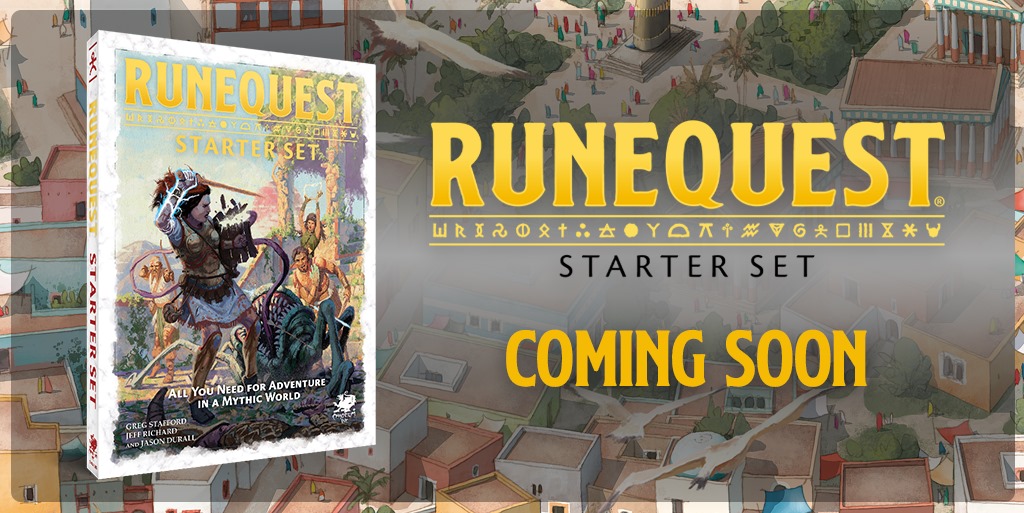
Chaosium has setup a sign-up page if you want to be notified as soon as the much awaited RuneQuest Starter Set is ready to ship from their warehouses. As far as I understand, if you register at the link above, you will be notified before the news spread to Chaosium’s usual channels, so it’s worth doing if you’re really looking forward to order on day one.
Learn a Setting FAST
Jason Durall, who has been involved with many deep and complex settings besides Glorantha, shared with us his process for learning about a new setting with the perspective of gaming in it or contributing to it. While the video is called “Learn a Setting FAST“, I wouldn’t call Jason’s process “FAST” given that it involves, say, reading a book twice, catching up with the fandom, and following up on the bibliography and sources of the IP’s authors… but towards the end of the video, Jason does go into advice for quickly finding useful material online.
The video won’t really answer the age-old question of “how do I teach Glorantha to new players in 15min or less?” (which has arguably also been answered as many times as it has been asked), but it does point to useful resources nonetheless!
The Battle of Queens Continues
Jeff Richard’s group goes through the aftermath of their first turn of battle! See last Journal issue for detailed notes on this preview of the battle rules.
The characters who were blasted with Lunar Madness see their Passions and Runes possibly affected by the experience, as the Gamemaster discusses what it meant for them with their respective players (a nice example of the kind of stuff we talked about on our last podcast episode!).
The party has to survive a volley of missile attacks as they charge the Silver Shields, while Jeff has a few “frank” words for those who disparage Yelmalio’s magic. The Battle of Queen’s climax is reached, and my questions from last week are answered: the events of the Battle seem indeed scripted and set in stone, and the player’s agency is focused on “what are you going to do about it?“. Well, what they do about is roll the absolute biggest Orate roll I’ve ever seen! Although my follow-up question is now whether this will really change things in any meaningful way: Nisk prevented a whole chunk of the Sartarite army from running away, and I’m looking forward to see how that matters.
By the way, you can check out an earlier draft of Jeff’s “playbook” for the Battle of Queens on BRP Central. It features some example of Battle encounter tables, and a round-by-round break-down of the conflict’s important events.
Fantasy Grounds RuneQuest Update
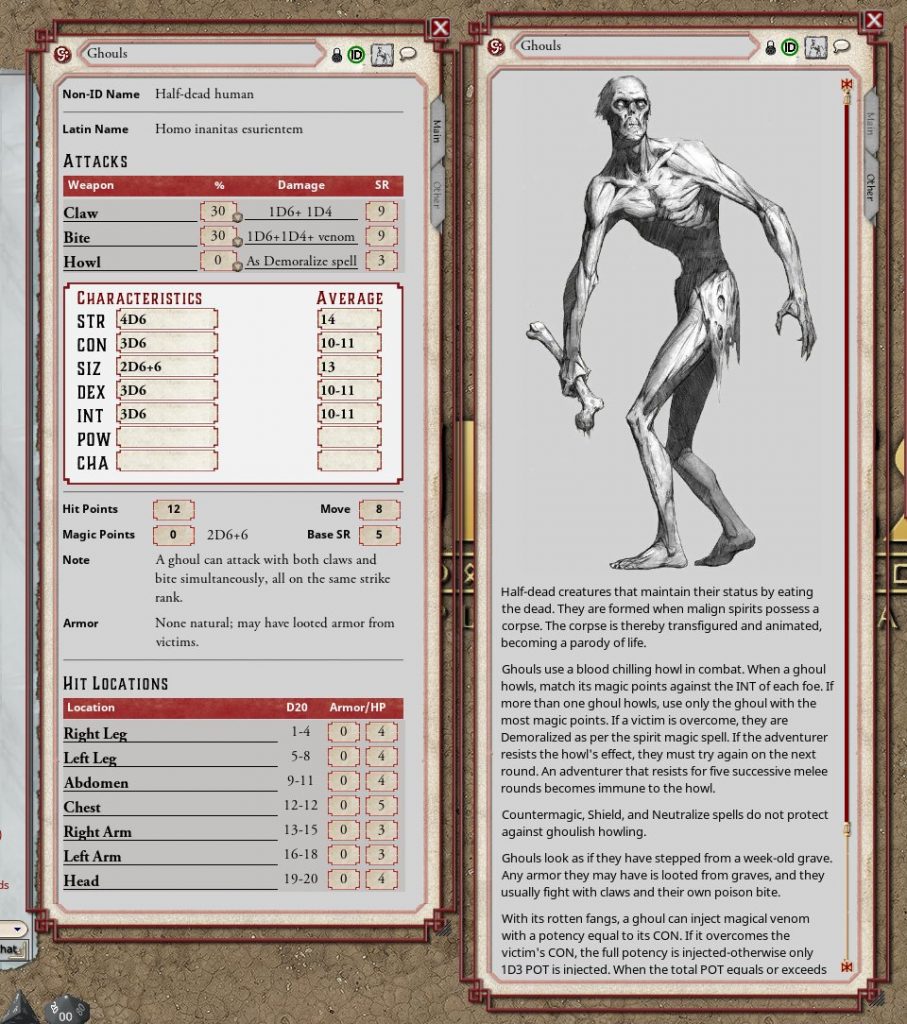
It looks like NPCs are getting imported into the system!
Jonstown Compendium

The Jonstown Compendium is Chaosium’s community content program for all Gloranthan games, hosted on DriveThruRPG. Disclaimer: all the relevant links are affiliate links that hopefully will let us cover some of the hosting and maintenance costs for the website and podcast! Thanks for using them!
Comparing Premium and Standard Print of The Company of the Dragon

Andrew Logan Montgomery, author of the best-selling Six Seasons in Sartar and The Company of the Dragon, has posted comparison photos of the Premium and Standard Print versions of his latest book.
For starters the covers are identical, the binding is the same, and the paper weight is identical. The Standard lays flat like the Premium and the paper is just as heavy.
What I see, side by side, is that the Standard looks just a bit faded and a lot more flat. The colors do not seem as deep. And the Premium is glossier. It seems most noticeable to me with the maps and the blue colored chapter plates. All in all I gotta say both are very attractive books, and I am pleasantly surprised how well standard matches up.
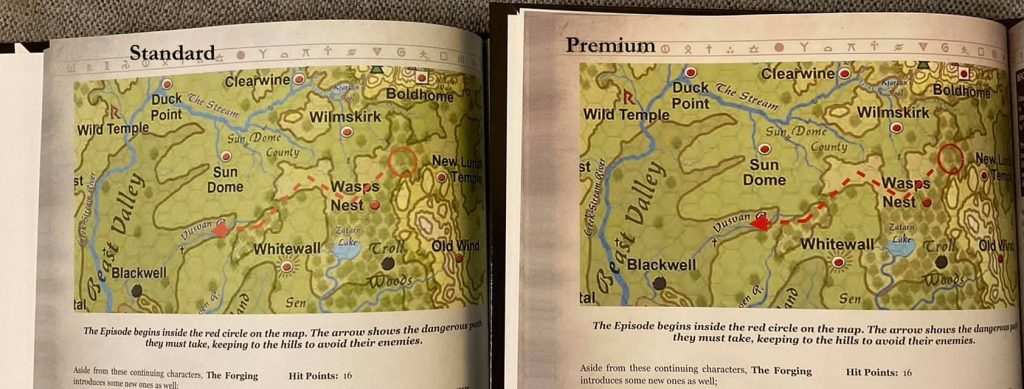
Andrew adds that “you really see the difference more under fluorescent lighting“.
You can see more comparison pictures in the original Facebook post, or in Chaosium’s reposting on their blog.
The Black Spear is Coming

Nick Brooke has been teasing us with a few illustrations by Mike O’Connor lately, for his new Jonstown Compendium work is coming “next month” (supposedly… that’s quite bold of him to, like, announce release dates and all).
Jeff’s Notes

Jeff Richard, the current mastermind on everything Gloranthan at Chaosium, is often posting notes and thoughts on the RuneQuest Facebook group. Here’s our curated list from the past week. A partial archive of these sources is compiled on the Well of Daliath.
On Small Sartarite Clans
Jeff posted a quite note about “small” Sartarite clans. The Culbrea tribe, for instance, has four “stable” clans (Elk, Jotaring, Lorthing, and Mathiording) with a sizable population of around 750 people. However:
Then there are five clans that have an average of 300 members each – too few to be a stable organisation. They are hunters, raiding bands, or religious orders more than stable social groups. They include the Barlamani, Blue Spruce, Orlamani, Owl, and Red Vireo Clans, and most are little more than a leader, his entourage, and their followers and supporters. For example, the Blue Spruce are the entourage of Elmalandti the Priest and household, while the Barlamani clan are now little more than the household warriors of King Ranulf. Unless things change dramatically, in the next few years I expect that at least two or three of these small clans to either disband or merge into other clans in order to survive.
This, still according to Jeff, is “an example of a Sartarite tribe under considerable distress as a result of the Lunar Occupation and Rebellion“.
The distressed clans occupy contested or marginal lands:
-Barlamani: Elendra’s Graze
-Blue Spruce: around Jarolar Keep (which they occupy)
-Orlamanni: between Hill of Orlanth Victorious and the Finger
-Owl: along the Owl Flight Crest
-Red Vireo: along the Old Saint’s Road
Gorangian Bronzeguts
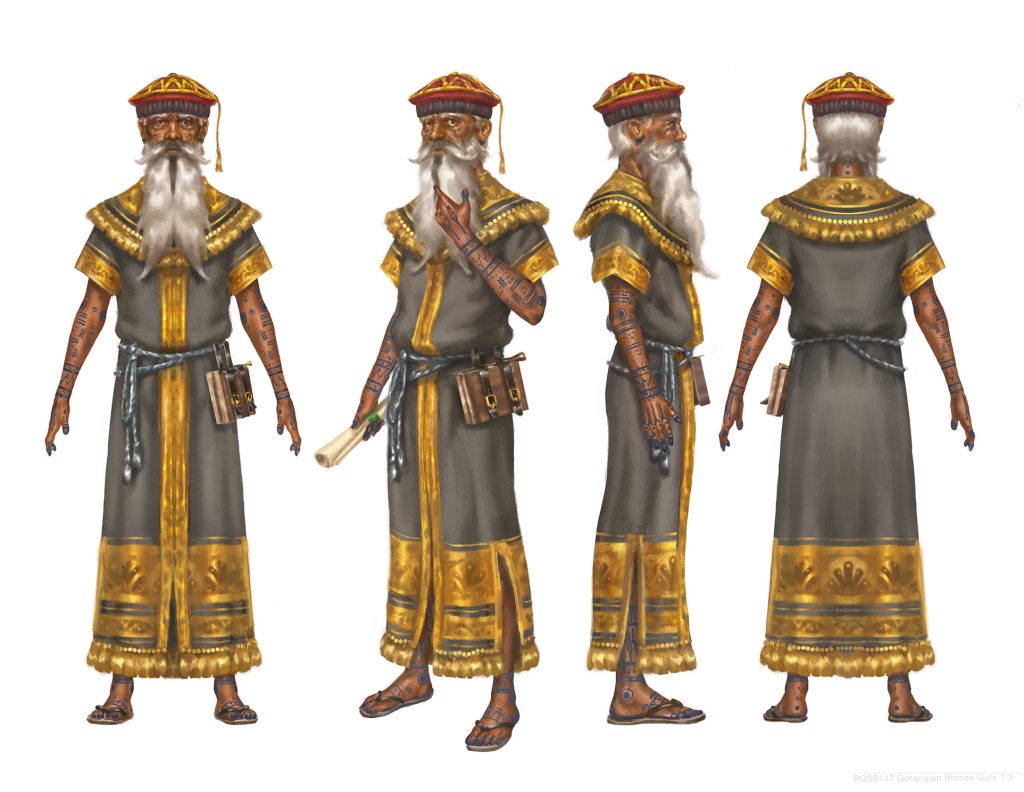
This nice chap pictured above is none other than the chief librarian of the Jonstown Knowledge Temple.
One thing I love about this is that Gorangian is not a particular heroic figure, but is an example of an important member of Sartarite society who is not part of the martial aristocracy or the Earth temples. Not only that, Gorangian is originally from Esrolia – an example of the ties between Sartar and that ancient Queendom.
If you’re curious about Gorangian’s nickname, Jason Durall gave us a clue by mentioning Didymus Chalcenterus, an Ancient Greek scholar.
Scribes are of course quite important, because they are the ones who literally make history:
This is tied into Sartar’s position as a center of trade. The wealth generated by trade supports scribes in each of the cities (with the most being in Boldhome). This in turn means that there are scribes recording poems, histories, myths, mathematics, philosophy, wisdom literature, drama, and even prose fiction! There are nearly 1500 Lhankor Mhy initiates in Sartar (400 in Boldhome alone!), which means there is likely an impressive output of writing in Sartar.
That is indeed a lot of scribes and philosophers! But I imagine that 90% of them are just taking care of the business of priests, merchants, and nobles, and are all procrastinating about that epic poem they told everyone they would publish one day…
Note that since scribes are mostly supported by the confederation, city, or tribe, they mostly live in urban centres, leaving very few Lhankor Mhy initiates living in rural clans:
I expect most people who want to be scribes go to the cities, where they have the temples, libraries, patrons, etc. Which is totally normal – just look at many Greek scholars who originally came from rural Greece, but ended up in Athens, Alexandria, Pergamon, etc.
We can expect this to be another so-called “change of tone” in the upcoming Sartar Homeland boxed set, in addition to the new editorial focus on road trade and inns:
So when you all imagine Sartar, remember also that this is also a kingdom of scribes, of texts, and of libraries. Nochet may have the equivalent of the Library of Alexandria, but Sartar then is Pergamon, with its great collection of texts and manuscripts.
Jeff concludes:
So I can completely imagine a Sartarite Herodotus who has traveled from Boldhome to Glamour, spent years in the Holy Country and Handra, and perhaps even sailed to Seshnela, Teshnos, or Jrustela, and is now composing their Histories. In fact, this would make a GREAT Lhankor Mhy character!
Don’t Stop Here, It’s Lightbringers Country
Jeff tells us about the importance of all the Lightbringers cults (not just Orlanth and Ernalda but also Chalana Arroy, Eurmal, Issaries, and Lhankor Mhy) around Dragon Pass an the Holy Country:
These six cults are the foundation of Orlanthi society and religion. Between two-thirds and three-fourths of all adults are initiated into at least one of these cults.
In rural areas, Orlanth and Ernalda overwhelmingly predominate, but in the cities, there are nearly as many initiates of Chalana Arroy, Eurmal, Issaries, and Lhankor Mhy collectively as there are Orlanth and Ernalda.
Jeff summarizes this as: “The Orlanthi are polytheistic, not henotheistic“.
Themes of the Hero Wars
We know that the many campaign frameworks for Glorantha are set in Dragon Pass because that’s where the Hero Wars are going to happen, like… any time now. Next year, or something.
While books like the Guide to Glorantha and King of Sartar give us the events of the Hero Wars, Jeff tells us what the Hero Wars are about. He encourages Gamemasters to first anchor the players and their characters in a community by depicting what their everyday life is, from the clan politics to the tribal feuds to dealing with raiding trolls and owed favours and sick family members. Once the adventurers are “grounded”, show how changes in the world are affecting their lives and their community, accelerating, gaining scale, requiring hard choices and shifting priorities. Arguably, this is what was already attempted in the old Hero Wars “Sartar Rising” campaign books. But Jeff then goes further:
The Hero Wars initially appears to be a simple conflict between the expansionist Lunar Empire and traditional Orlanthi in Sartar. Such initial understandings are deceptive – the Hero Wars are a many-faceted conflict between the gods and Chaos, between two antagonists who are their respective Shadows, between the Elder Races and humanity, and a renewal of the ancient wars between Nysalor-Gbaji and Arkat. Sworn enemies will find themselves fighting side-by-side against former friends. Long-held sacred truths will be exposed to be untrue, and new truths unveiled.
This complexity might only reveal itself after many sessions of play.
This is where things get tricky: the Gamemaster should ideally show that the Hero Wars aren’t just happening between mortals, but also on the cosmic levels of Glorantha:
Everyone in Glorantha has associations which cause influence between the individual and the gods and these influences are always acting. The Glorantha Runes are one way of understanding this maxim. Thus, a feud between two tribes may echo ancient conflicts between gods, and peace between individuals may require re-enacting an ancient myth.
Similarly, conflicts between communities may parallel and embody the larger conflicts of the Hero Wars.
Finally, the Gamemaster should also ideally introduce the “shadow” of the characters, that is the “unconscious part of ourselves that remains with us although we consciously reject it“.
During the course of the campaign, traditionalist Orlanthi may find themselves accepting Illumination and working with Lunar deities, and devout Lunars may find themselves working with rebel Orlanthi to destroy the Red Moon itself.
The Lunars and Chaos
The Red Goddess is a Chaos deity, pure and simple:
She has the Runes of Moon, Chaos, and Life. This paradox is a source of her power, but also the source of the unwavering antagonism with the Storm Gods (Orlanth, Storm Bull, Humakt, and even the more peaceable Lightbringers) and their cults. It is also the source of her antagonism with the cults of Darkness (Kyger Litor, Zorak Zoran especially). The mastery of the Crimson Bat is a constant reminder of this connection.
The Seven Mothers however are not tainted by Chaos, even though they “helped bring her into existence“. They also extend her influence in places and situations where she doesn’t have power.
Most Lunars believed that the Red Goddess shall free the world from bondage and liberate the minds and souls of all. This is her promise and much of the appeal of the Lunar Religion even in places like Sartar.
Most Orlanthi believed the Red Goddess is one of the Lords of Terror, Gbaji reborn, and the harbinger of a new Gods War. This is why she is hated and feared and even rival gods are willing to cooperate against her.
Both view points are likely true. Once the Lunar Way came into direct conflict with the Orlanthi, perhaps the Hero Wars were inevitable.
Notes on Lunar Cities
Furthest was founded around the same time as Boldhome, and settled by “folk from the Lunar Heartlands who followed Hon-eel to Dragon Pass“:
Furthest is not a Tarshite city so much as a Lunar city, and it operates somewhat outside the network of clans and traditional kinship groups that characterize most Orlanthi cities (although it has those too). A good real world point of comparison is Alexandria Eschate – aka “Alexandria the Furthest”.
Glamour is the “cultural, religious, and political center of the Lunar Empire“. Jeff refers us to Antioch during the Roman Empire, or Baghdad under the Seljuks as a point of reference.
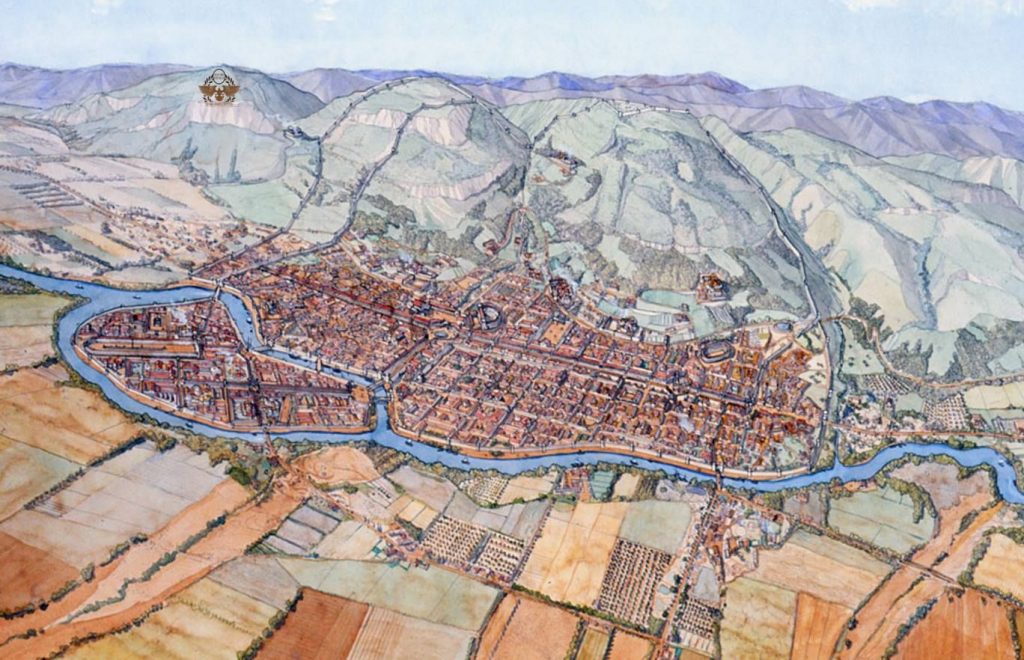
Between Furthest and Glamour are the Dara Happan Tripolis (well, two of the three – Alkoth and Raibanth), the beautiful artistic center that is Jillaro-on-the-Green with its Daughter’s Roads, and Saird. Mirin’s Cross by all accounts a city of administrative rather culture importance – like Mediolanum or Nicomedia under Diocletian.
Jeff concludes:
It is important not to think of the Lunar Empire as a monolithic thing. It is as much a network of cities and tribes, held together by Glamour and the Lunar Way (and the resources those two can muster) and by the position of the Red Emperor as both Dara Happan emperor and Carmanian shah.
The Red Emperor asserts to be more than merely the ruler of a place or peoples – many of his titles are universal in nature. He is Moonson, Lord of the Four Quarters, Staff and Pillar of God, Leader of the Egi, Shah of Shahs, and the Bright and Illustrious Emperor of Dara Happa.
Community Roundup
The community roundup is our highlight of interesting things being mentioned in the Glorantha-related Facebook groups, sub-Reddits, and other similar online places.
Glorantha, Meaning, and Mythology
Andrew Logan Montgomery (which we talked about above), has a new good post on his blog about the role of myths in the real world and in Glorantha:
[…] a lot of Glorantha fans get lost in the minutia of the mythology and all the apparent discrepancies. They want to know whether Orlanth has four arms or two, whether Yelmalio is really Elmal, whether Humakt brought death by killing Grandfather Mortal or Rebellus Terminus did by killing Murharzarm, whether Vinga is Orlanth or Orlanth’s daughter, etc. They want to know the chemical composition of the sun rather than why American children draw it with a yellow crayon while Japanese draw it with red.
But myth will not give you facts, only meanings.
Andrew then goes into some commentary on exactly that: Yelmalio and Elmal, the Death of the First Emperor, the origin of Vinga, and so on.
If you regard a god as simply a being with super-powers and longevity, switching from worshipping Elmal to worshipping Yelmalio seems like switching between two different people. If you view gods as expressions of the numinous, on the other hand, as Gloranthans do, there is no confusion.
The conclusion gets surprisingly and nicely practical, as Andrew outlines four suggestions for “mental adjustments” that may help a player or Gamemaster better grasp the complexities of the setting. If you’re in a hurry, just scroll to the bottom and read that part!
Thirsty Sword Vingans
If you’re already familiar with Thirsty Sword Lesbians, Evil Hat’s Powered by the Apocalypse game featuring queer flirting and sword-fighting, you know where this is going… if not, well, imagine a Powered by the Apocalypse game featuring queer flirting and sword-fighting IN GLORANTHA!
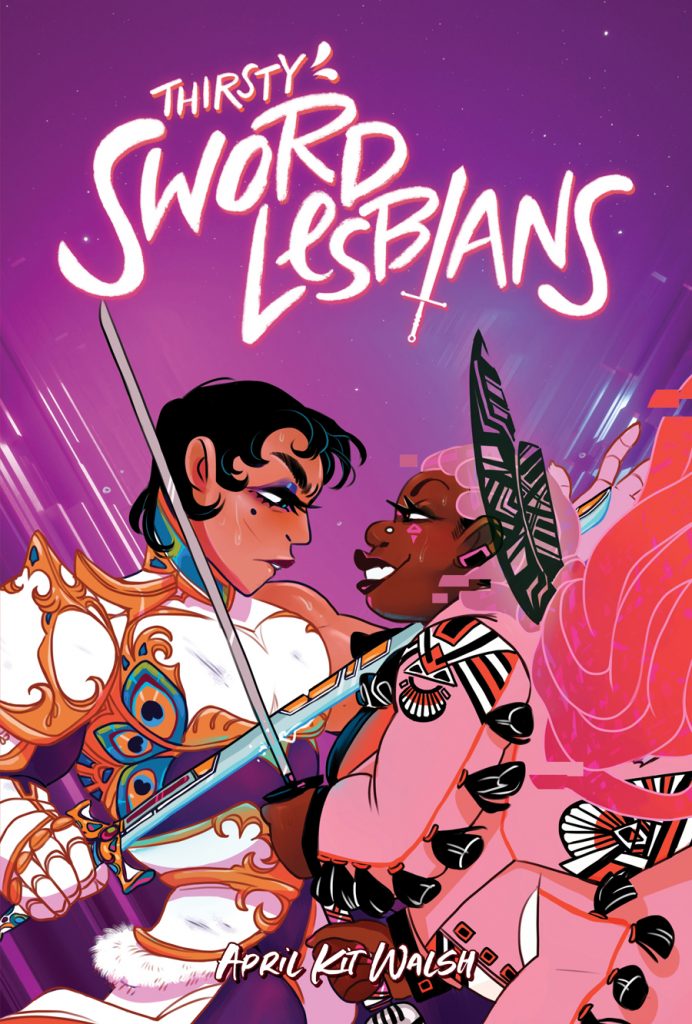
The Burn After Running blog has a few sparse notes for running such a game, and I love this idea, even though I’m generally not a fan of the PbtA system. This could be great for introducing Glorantha to a new and diverse audience! What other crazy Gloranthan mashups can you think of?
The Trials of Great Sister
Eff, over at the generally Lunar-inclined Eight Arms and The Mask blog, tells us about the time when the Red Emperor was called “squirt” by Deneskerva, also known as “The Great Sister”, and a daugher of Sedenya the Red Goddess. This is a tale of older sibling responsibilities towards their little brothers, and how even the mighty Red Goddess has to arrange for child care, because it’s hard to be a working mom, you know.
Up Close with Oriflam’s RuneQuest
In the late 80s and early 90s, Oriflam produced the French version of RuneQuest 3rd edition. I know many of my fellow French people have very fond memories of these books, especially since they featured unique illustrations and layout, different from the original English versions from Avalon Hill.
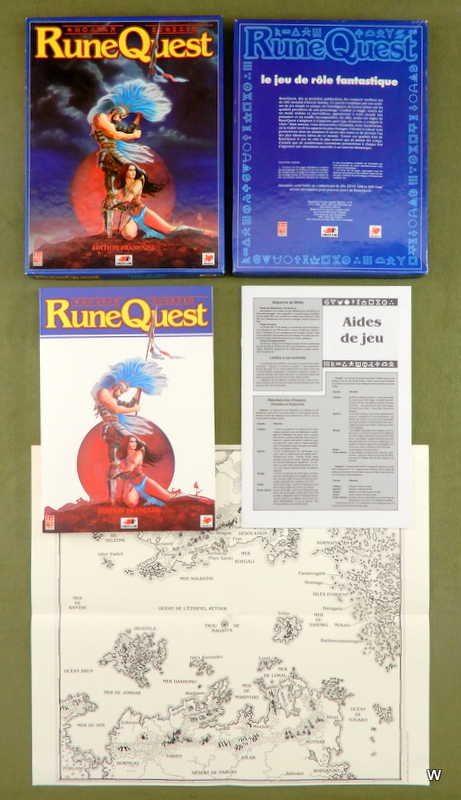
WayneBooks, who recently featured the German edition of RuneQuest, now provides us with many nice photos of this French edition, which is also, at the time of writing, available in their inventory.
If you want to know more about Oriflam’s entire line of products, Chaosium’s Well of Daliath has an exhaustive index, and Runeblogger has a relevant article (which you can translate in English if you don’t read Spanish thanks to the Google Translate button at the top).
Che Webster on Rules Anxiety
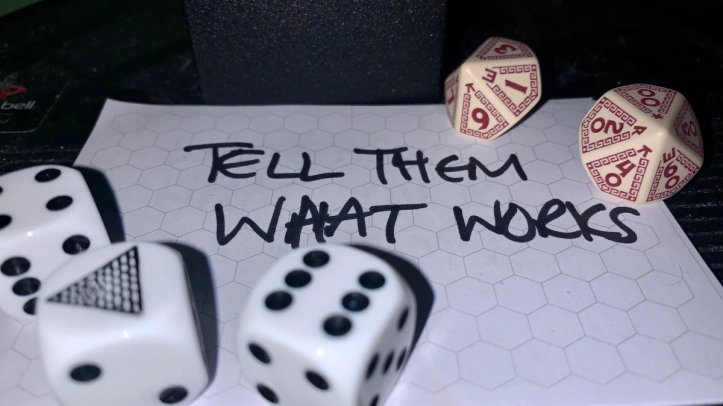
I’m sad to hear about Roleplay Rescue‘s Che Webster’s mental health issues: in a recent frank blog post he details how contradictions in the RuneQuest rulebook can cause his (diagnosed) anxiety to flare up. This unfortunately might happen a lot, given how (in my opinion) this book is lacking some extra editing pass in many places… I’m sure most of us who complain about rules on BRP Central or elsewhere don’t have any excuse besides being entitled grognards, but if this is of interest or relevance to you, Che Webster followed up with another blog post about the ways that help him cope.
Elsewhere on Arachne Solara’s Web
Not everything is about Glorantha, although most things are! Here are loosely relevant things that we found on the interwebs.
The Real Rainbow Mounds

The Rainbow Mounds are a classic adventure site featured in the even more classic Apple Lane scenario pack for RuneQuest. We know that this adventure will get revisited for the upcoming RuneQuest Starter Set, but to help you with the wait, here are a couple of places here on Earth that can be used as an alternative!
What you want in general is salt. Apparently, it makes things all colourful and pretty, especially when (as I suspect) you get a photographer who knows how to spice up the vibrancy of their pictures in Adobe Lightroom. Anyway, let’s start in Russia with the salt mine tunnels under Yekaterinburg:
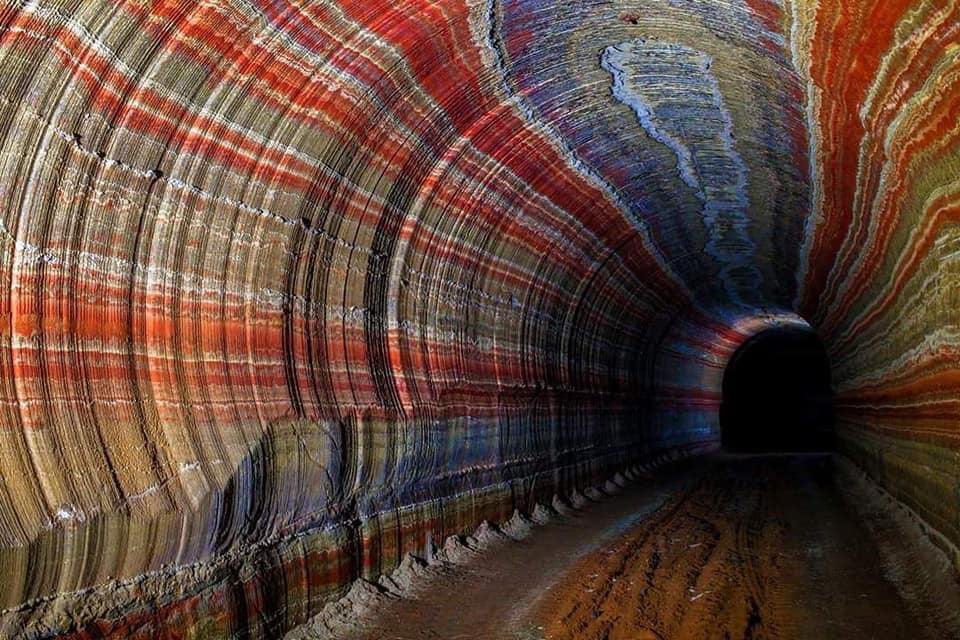
Next, let’s go to southern Iran where we have a few choices in front of us. First, the Salt Caves of Qeshm:

I actually get the impression that there are several salt caves to visit in the same area… but maybe we’re tired of being underground? Let’s get some fresh air with the Salt Dome of Jashak:
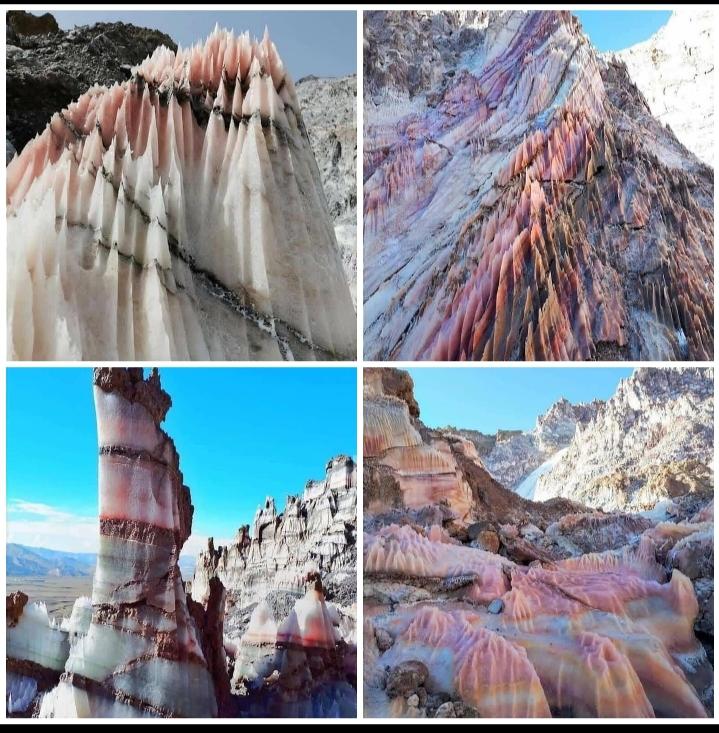
And finally, you can’t get any better than the actual Rainbow Mountains (and Valley) of Hormuz island, with is actually right next to Qeshm:

Those Damn Cheating Merchants

This article from the Jerusalem Post talks about a recent discovery of a possibly fraudulent weight from the 8th century BCE, which is great inspiration if you are playing a less-than-honest Issaries merchant in a Gloranthan campaign. And frankly, who would play a totally-by-the-book trader?
Historical References from the Saint Louis Art Museum

I don’t know about you, but I’m always happy to look at some pictures of historical objects. The Saint Louis Art Museum has a bunch of those available online! Here, for example, is a link to their collection of objects dating from 8000 BCE to 1 CE. The picture above in particular is an Egyptian Apis Bull, dating from 664–332 BCE.
Achaemenid Persian Art

The wonderful blog Digital Maps of the Ancient World has a short but sweet post on Achaemenid Persian Art, which can be used for inspiration for… errr… I don’t know, Gloranthan correspondences to the real world are always so tricky. The Lunar Provinces maybe? Anyway, just look at the pretty pictures!
Applied Geometry with the Babylonians

We apparently now have some evidence that the Babylonians (20th to 17th century BCE) were even better at math than we previously thought! Some recently discovered tablets show the use of Pythagorean triples dating back to a thousand years before Pythagoras… Your Lhankor Mhy sage should therefore be able to compute distances with angles and give you bonuses to your ranged ballistic attacks!
Thank you for reading
That’s it for this week! Please contact us with any feedback, question, or news item we’ve missed!


